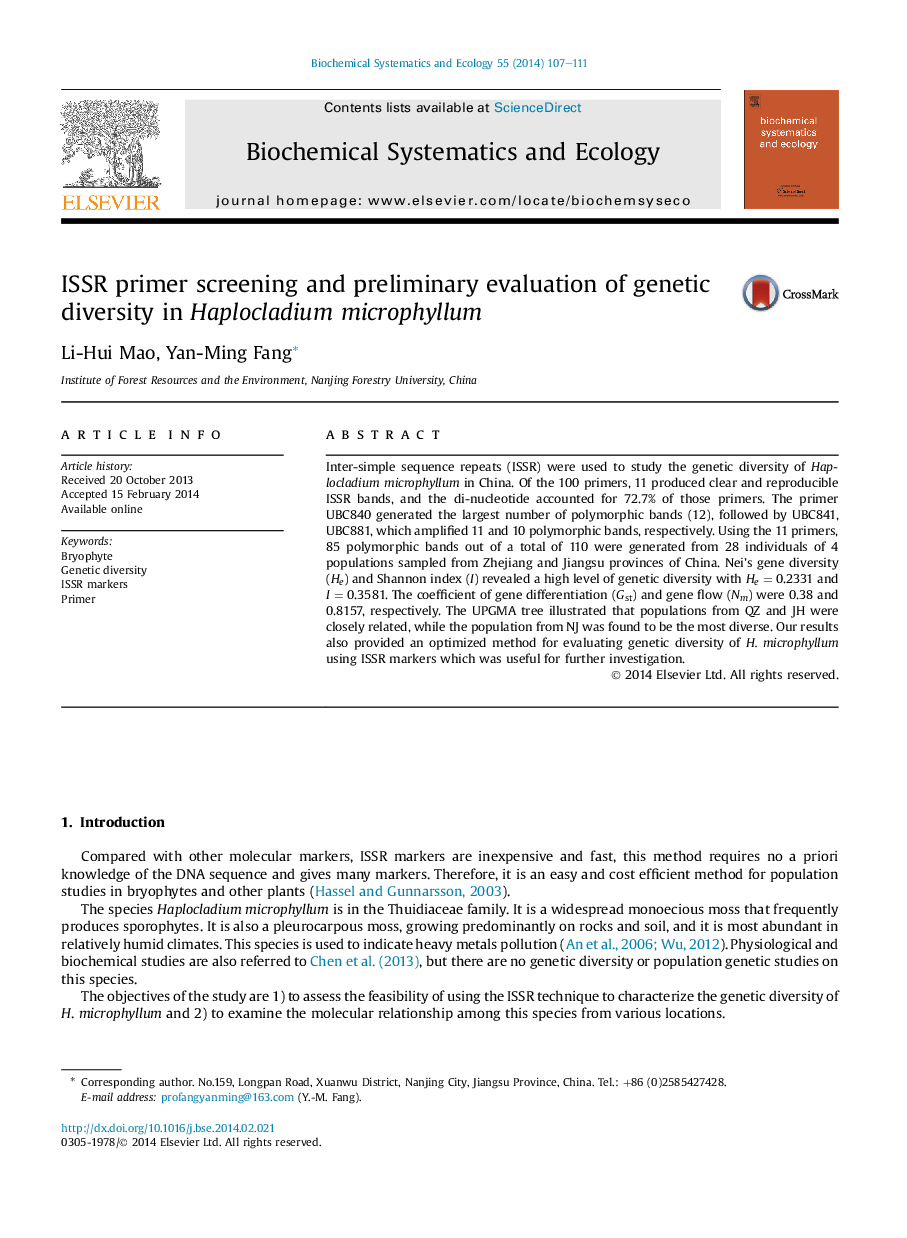| Article ID | Journal | Published Year | Pages | File Type |
|---|---|---|---|---|
| 7768704 | Biochemical Systematics and Ecology | 2014 | 5 Pages |
Abstract
Inter-simple sequence repeats (ISSR) were used to study the genetic diversity of Haplocladium microphyllum in China. Of the 100 primers, 11 produced clear and reproducible ISSR bands, and the di-nucleotide accounted for 72.7% of those primers. The primer UBC840 generated the largest number of polymorphic bands (12), followed by UBC841, UBC881, which amplified 11 and 10 polymorphic bands, respectively. Using the 11 primers, 85 polymorphic bands out of a total of 110 were generated from 28 individuals of 4 populations sampled from Zhejiang and Jiangsu provinces of China. Nei's gene diversity (He) and Shannon index (I) revealed a high level of genetic diversity with He = 0.2331 and I = 0.3581. The coefficient of gene differentiation (Gst) and gene flow (Nm) were 0.38 and 0.8157, respectively. The UPGMA tree illustrated that populations from QZ and JH were closely related, while the population from NJ was found to be the most diverse. Our results also provided an optimized method for evaluating genetic diversity of H. microphyllum using ISSR markers which was useful for further investigation.
Related Topics
Physical Sciences and Engineering
Chemistry
Organic Chemistry
Authors
Li-Hui Mao, Yan-Ming Fang,
